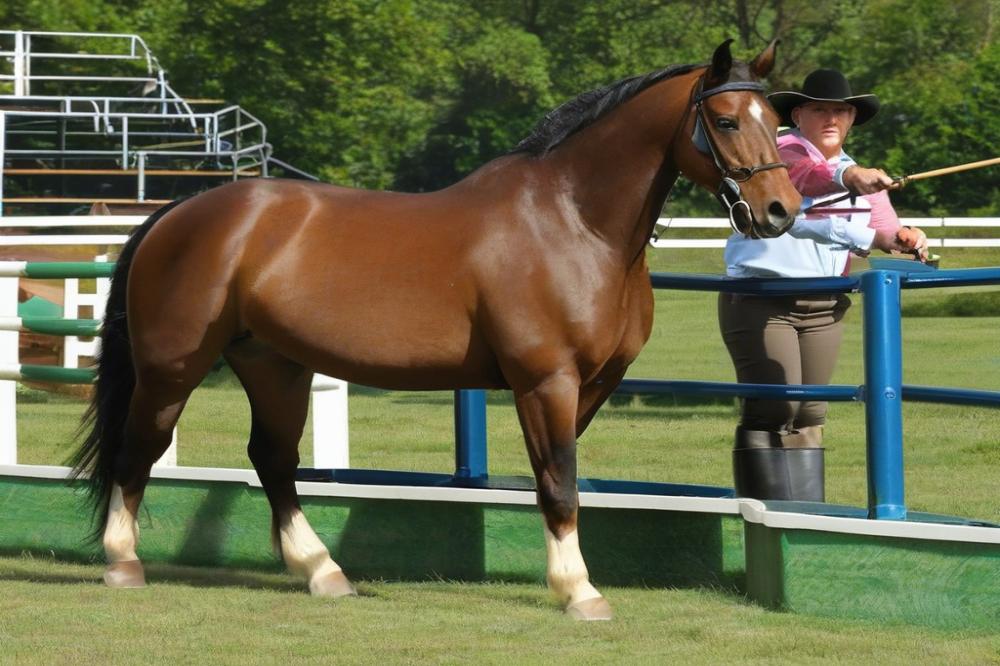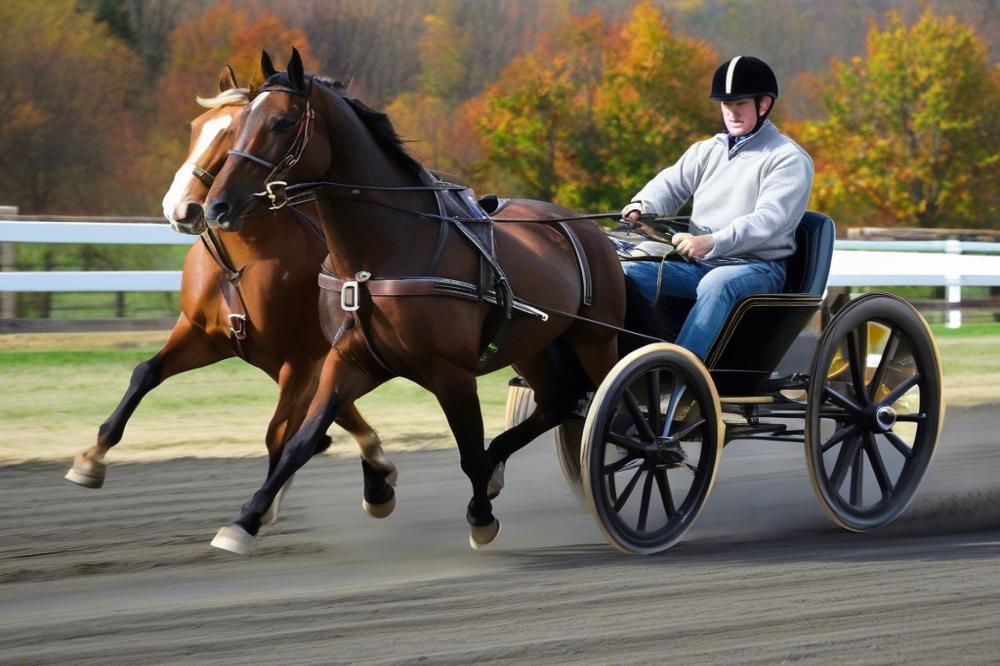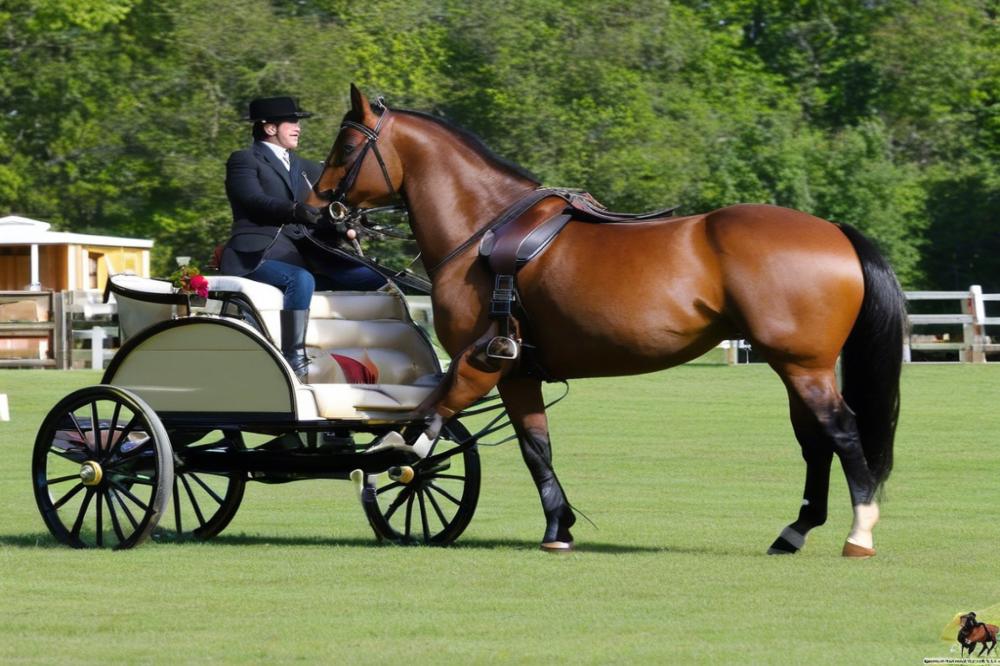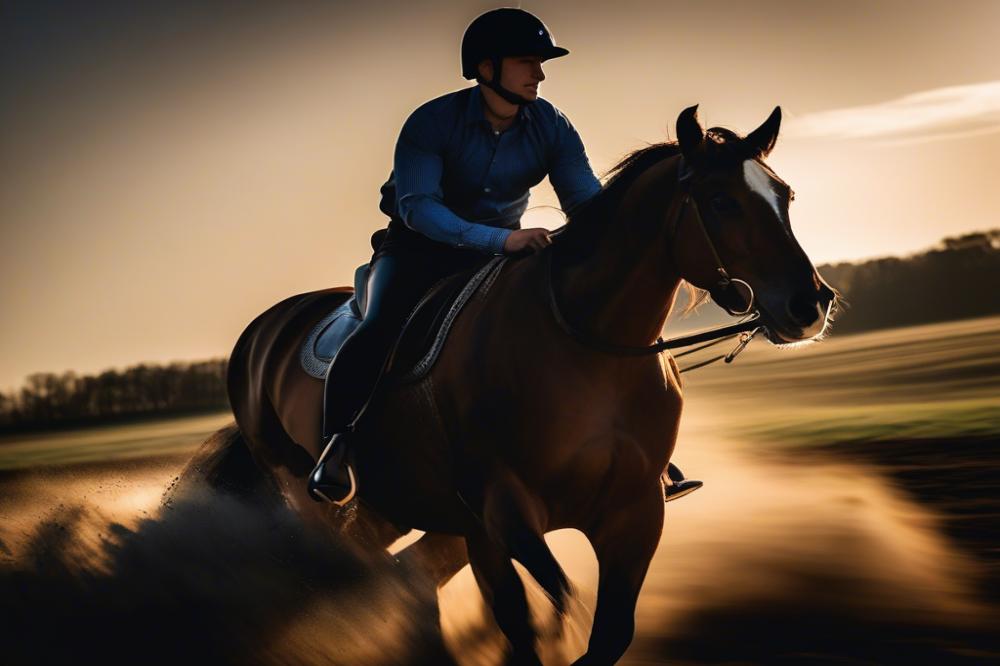Understanding Driving Horses
When you think about horses, what often comes to mind are the images of majestic creatures galloping freely across open fields. But have you ever considered the art of driving horses? It’s a fascinating discipline that allows us to enjoy the grace and power of these animals in a whole new way. Imagine a beautifully trained horse trotting gracefully while pulling a carriage or a cart, showcasing not only its strength but also the bond between horse and handler.
The Importance of Training

Proper horse training is critical for driving. Training is not just about getting a horse ready for the task; it’s about building trust and understanding. Think of it like teaching a dance where both partners must learn the steps and the rhythm together. A horse that is well-trained for driving will be safer, more responsive, and more enjoyable to work with. This relationship is built through consistent care and patience. Without good training, you might as well be trying to teach a cat to fetch—frustrating, right?
The Purpose and Benefits of Driving

So, why should anyone dive into the world of horse driving? First, it’s a fantastic way to bond with your horse. With the right equestrian techniques, you can enjoy outings that create lasting memories. Driving training is also a great way to keep a horse physically fit and mentally stimulated. Just like people, horses thrive on variety and challenge.
Additionally, once you’ve got a horse trained to drive, your riding options can expand dramatically. You can explore countryside trails or take part in competitions and events. Imagine the thrill of participating in a driving competition where horses show off their skills, all while you beam with pride. And let’s not forget, there’s always the allure of stunning akhal teke colors shimmering in the sunlight as they trot gracefully before an audience.
It’s funny to think about how many different roles a horse can fulfill. Some may wonder, can a cryptorchid horse reproduce? Well, that’s a whole different topic, but it shows how versatile these animals can be. Whether for leisure or competition, proper driving training opens up a world of opportunities. Finally, remember that incorporating driving into your horse care routine can be a delightful adventure worth pursuing.
Understanding the Basics of Horse Driving

Horse driving is an exciting way to work with horses. Simply put, it involves harnessing a horse to a cart or carriage so that it can pull it. This activity combines the art of horse training with the thrill of driving. Whether for leisure or competition, driving a horse opens up a whole new world of equestrian skills.
Different Types of Driving
There are several styles when it comes to horse driving. Pleasure driving is one of the most popular. Picture a sunny day, with your horse trotting merrily along a scenic route. It’s all about relaxing while you enjoy the ride. Then there’s competitive driving, where precision and speed are key. Drivers must navigate obstacles and showcase their horse’s abilities. It’s not just about going fast; it’s about skill. Other forms include tandem driving, where two horses are hitched in a line, and single driving, involving just one horse. Each type brings a fresh experience!
Basic Equipment Needed
Before diving into horse driving, you should gather some essential equipment. A good harness is crucial. It helps the horse transfer its strength to the cart effectively. Make sure it fits properly! An ill-fitting harness can cause discomfort, leading to problems during driving training. Then, of course, you’ll need a cart. They come in many shapes and sizes, from two-wheeled vehicles for pleasure driving to more complex styles for competition. Do not forget the reins! Reins connect you to the horse, acting as your communication tool. Keep everything in tip-top shape; proper horse care extends to gear, too.
Jumping into horse driving is a journey filled with fun and the chance to bond with your horse. Think of it as dancing together; both need to be in sync, and practice makes perfect! As you learn the ropes of equestrian techniques, the bond between you and your horse will grow stronger. Remember to enjoy every trot, every turn, and every moment in the saddle. Happy driving!
Preparing the Horse for Training
Assessing the Horse’s Temperament and Suitability
Before diving into horse driving, it’s vital to assess your horse’s temperament. Every horse has its own personality, just like people do. Some may be calm and easygoing while others could be a bit spunky. If a horse is nervous or skittish, it may not be ready for the challenges of driving. Take time to observe how your horse reacts to new situations. Does it shy away from loud noises? Or does it stand tall and brave? Knowing the horse helps tailor your training approach. Always think safety first; a well-suited horse makes training smoother and more effective.
Basic Groundwork and Groundwork Exercises
Groundwork is the backbone of horse training. It’s like setting the stage before the performance. Start with basic commands like walking, stopping, and turning. Use a halter and lead rope to guide your horse. These simple equestrian techniques build a strong foundation. A little circle around you can be a great way to teach responsiveness. Ask the horse to move away from pressure, and it will learn to listen. Keep your sessions short and fun. After all, bored horses don’t learn well. It’s like teaching a dog new tricks; they stay engaged when they enjoy it.
Establishing Trust and Communication Between Horse and Handler
Building trust with your horse is crucial. Think of it as creating a friendship. Horses are sensitive beings and can pick up on your feelings. Stay calm and patient, even on tough days. Use gentle words and a soft touch when interacting. Create a routine when training; horses thrive on consistency. Remember, eye contact can be reassuring; a horse appreciates the connection. Positive reinforcement works wonders too. A treat or a kind pat can make all the difference. Like a good neighbor, always be there for your horse, and soon enough, it will look to you for guidance.
Getting your horse ready for driving is a journey. Enjoy each moment and grow together through this exciting training adventure.
Introducing Harness and Equipment
Familiarization with Harness and Driving Equipment
Getting your horse used to the harness and driving equipment is a big step in horse training. Start by showing the horse each piece of gear. For instance, let them sniff the harness before you put it on. This helps them connect it with something they know well. Horses are curious creatures, so pique their interest with the shiny bits and straps. You might say, “Look at this big, shiny thing! It’s not going to bite!” Keeping it light can ease tensions. Gradually, introduce the horse to all parts of the driving rig, including the cart, saddle, and bridle. Patience is key here; don’t push them too quickly.
Proper Fitting of the Harness
Once your horse is more comfortable, it’s time for the fitting. A harness that doesn’t fit well can cause discomfort and even injury. Start by placing it gently over their back and adjusting the straps. Always check for rubbing points and ensure nothing is pinching. A good rule of thumb is to leave enough room for two fingers between the horse and the harness. If you notice your horse fidgeting, you may need to readjust. You want to see your horse standing relaxed and calm, not dancing around like they’ve just seen a ghost!
Desensitization Techniques to Reduce Anxiety Around Equipment
Desensitization is an important part of the equestrian skills toolbox. You can employ several techniques to help ease any anxiety your horse might feel. Start by using a softly spoken voice while they get accustomed to the harness. Sometimes, playing soothing music nearby can create a calming environment. You might also try introducing equipment slowly, allowing them to interact with it without any pressure. For instance, leave the harness on the ground and let them explore at their own pace. A horse that feels safe will be more willing to accept the gear. Remember, every horse is different. Some might adapt quickly, while others take their time. Be patient, and don’t forget some gentle rewards for positive interactions. A few treats never hurt, right?
Basic Driving Skills Training
Starting with Ground Driving
Ground driving is the foundation for a horse’s driving skills. Before you attach anything to your horse, it’s wise to establish a connection. Noise and confusion can set back even the most patient horse. So, take a deep breath, and approach this phase with calmness and care. A gentle halter can go a long way in building trust.
Find a spacious area where your horse feels comfortable. Start by walking beside your horse as you guide them with a lead rope. This part is crucial. It helps your horse understand your intentions without the distraction of a cart or harness. Praise your horse often. Your voice can be like a soothing balm. As your horse gets more relaxed, begin to introduce the long lines.
Using Long Lines for Initial Training
Now, let’s talk about long lines. These are like magic strings that help you guide your horse from a distance. They allow for freedom while keeping control. Start by attaching the long lines to the halter. Walk behind your horse and let those lines fall to the ground. With a little patience, your horse will learn to follow your cues. If they start foraging for grass, give a light tug.
Remember to practice both walking and stopping. A seasoned horseman knows that variety can keep training engaging. Adding distractions, like other animals or noises, can help your horse learn to focus. Use some treats if needed, but don’t overdo it. You want the horse to work for your praise and guidance, not just for a snack.
Teaching Commands and Cues for Steering and Stopping
Next comes the fun part: teaching commands! Think of commands as the language between you and your horse. Clear cues can make all the difference. Start with simple verbal commands like “whoa” or “walk.” Also, apply gentle pressure on the lines for steering. Pulling slightly to the right should encourage your horse to turn in that direction.
Every horse is different, so be on the lookout for reactions. Some might respond quickly, while others take time. That’s perfectly normal. For stopping, practice until your horse understands the command clearly. Consistency is key. You might find yourself sounding like a broken record at times, but this repetition is vital in horse training.
Set small goals during each session. You want your horse to realize that you’re a team. Riding styles may vary, but the basic skills remain similar. As an analogy, think of it like teaching a child to ride a bike. With steady guidance and encouragement, they become confident. The same applies here.
All in all, training a horse to drive takes time and commitment. Practice well, learn the ropes, and enjoy this remarkable journey together. Riding alongside your horse, the two of you will be on the road to mastering new equestrian skills in no time.
Progressing to Cart Training
Introducing the Cart
Introducing the cart to your horse is an exciting step. Use a lightweight cart for starters. This prevents your horse from feeling too overwhelmed. Bring the cart into their space slowly. Let them take a good look. Horses are naturally curious creatures. They might sniff around, or maybe even take a step back. Allow them to explore it at their own pace. This sets a positive tone for what’s to come.
Safety Considerations When Attaching the Cart
Safety always comes first when you’re attaching the cart. Check all the harnesses and straps for wear and tear. Ensure everything fits snugly but not too tight. An uncomfortable fit can annoy the horse and lead to issues down the line. Before you attach the cart, let your horse get used to wearing a harness. Familiarity breeds comfort! Perhaps walk your horse around while wearing the harness. This helps build their confidence. When it’s time to attach the cart, have someone else help you. Extra hands make the process smoother and safer.
Step-by-Step Process for Getting the Horse Used to the Cart
First things first, have your horse stand quietly. Start by hooking the cart to them but keep it light. Don’t forget to check if they are comfortable. Take a few moments to walk them around in a calm space. Always be ready for a little shuffling or initial unease. Horses speak their minds, after all. Give gentle encouragement and reassure them with calm words. Explaining what you are doing helps too— well, as much as your horse will understand!
Once your horse is okay with the cart being attached, it’s time to move. Start by taking small steps. A few short walks should do the trick. Keep the environment low-stress. Familiar surroundings aid in horse training. If they seem relaxed, slowly increase the distance. Each day, gradually extend your sessions. This builds their stamina and trust.
Next comes the fun part—turning and stopping! I know what you’re thinking: turns and stops are easy! But to a horse, it may feel like learning to dance. Use clear cues to communicate what you want. With patience, your horse will learn how to respond to your commands while pulling the cart.
To keep things fresh during your driving training, mix it up. Change routines or introduce obstacles, like cones. This sharpens their equestrian skills while keeping them engaged. Remember to praise your horse after each session. A little bit of kindness goes a long way. If they see that driving with a cart is fun, they’ll be more eager to learn!
Advanced Driving Techniques
Improving Responsiveness and Control
Building responsiveness in your horse is key to successful driving. One way to start is with gradual cues. Use your voice and subtle rein movements to communicate what you want. This helps your horse understand the desired action. Consistent practice will strengthen this connection. Think of it like playing catch; if the horse doesn’t know how to catch the ball, you need to show it a few times.
Consider using ground driving as part of your horse training routine. It allows the horse to feel pressure and learn how to respond without being hitched to a cart. This technique sharpens equestrian skills and builds trust. Sometimes, mistakes happen. If your horse ignores your cues, don’t fret. Stay calm and try again. Remember, patience is key!
Dealing with Distractions and Confidence Building
Horses can be jumpy, especially in new places. Become the rock that your horse can rely on. Start by exposing your horse to different environments. Busy streets, open fields, or soft woods—all present unique challenges. Each outing serves as a confidence booster. Celebrate all victories, big or small.
If your horse becomes distracted, reinforce good behavior. Reward calmness with treats or praise. Try to keep a sense of humor. After all, we all have off days. “Hey, we can’t all be perfect, right?” You’re training a horse to drive, not to star in a movie!
Practicing Various Terrains and Conditions
Variety is the spice of life, especially in driving training. Every terrain teaches your horse something new. Hills, gravel, or muddy paths test both the horse and the driver. Start slow in controlled settings before tackling tough conditions. A sudden turn on loose gravel? That’s a recipe for chaos!
Adjust your expectations based on the situation. Rainy days bring their own set of challenges. The horse may slip or spook. Introduce your horse to these weather conditions gradually. With time, the horse will adapt. Just as you wouldn’t take a new driver on the highway, don’t rush your horse into intense situations.
Attending clinics or group lessons can offer more varied experiences. It connects you with other enthusiasts who share tips and experiences. Equestrian techniques often improve through shared knowledge. The more the horse is exposed to different scenarios, the more confidence it gains.
Let this journey be rewarding! Each step builds a stronger bond between you and your horse. Enjoy the ride, literally and figuratively.
Maintaining Your Driving Horse
Importance of Regular Exercise and Conditioning
Regular exercise is essential for a driving horse. Just like people, horses need to stay fit to perform well. Driving training can be strenuous, so conditioning builds strength and stamina. Think of it as preparing for a big game. No athlete would show up unprepared, right?
While honing their equestrian skills, it’s vital to incorporate various activities. Simple walks, long trots, and short bursts of speed all contribute to a horse’s fitness. Variety keeps the training interesting, reducing boredom for both horse and handler. Each session should be planned thoughtfully, mixing tasks to avoid a predictable routine.
Health Considerations and Care
Horse care isn’t just about feeding; it goes beyond that. Regular health checks can help catch issues early. Pay attention to signs like limping or changes in behavior. These could indicate discomfort or illness. Horses can’t talk, so being observant is key.
Nutrition plays a big role in overall health. A balanced diet helps maintain energy levels and body condition. Treats can be fun, but moderation is crucial. Additionally, dental health is often overlooked. Healthy teeth make eating easier. Don’t forget to schedule a visit to a veterinarian who understands equestrian techniques.
Routine Check-ups for Equipment and Horse
Equipment care is just as vital as horse care. Inspect harnesses, reins, and carts regularly. Any wear and tear could lead to accidents. No one wants a surprise during a ride. Think of it like checking the brakes on a car. Safety should always come first.
Routine check-ups for the horse are equally important. Hooves need trimming, and coats require grooming. Frequent farrier visits help keep feet healthy. A clean, well-groomed horse looks great and feels great too! Taking time for these tasks fosters trust and comfort between horse and handler.
Remember, a well-maintained horse is a happy horse. Treat your driving partner with kindness and watch your bond grow.
Wrapping It Up
Training a horse to drive can feel like a journey full of twists and turns. It begins with building a solid foundation of trust and respect between you and your horse. From groundwork to harnessing, every step is vital for teaching your horse the skills needed for driving. Remember to take it slow and break down each task into manageable parts. Just as you wouldn’t rush a cake to bake, giving your horse the time it needs will lead to better results.
Patience is key in this process. Frustration might creep in, especially when your horse seems to have its own ideas about the training plan. Picture a stubborn mule. Instead of getting upset, laugh it off and remember that every horse has its own personality and pace. You’ll encounter days when your horse is a champ and others when it just wants to take a nap. This is normal! Consistency in training is equally important. Short, frequent sessions are often much more effective than long, infrequent ones. Just like practicing a sport or honing a skill, regular practice helps your horse become more comfortable and confident.
In the end, appreciating the journey is what truly matters. Training a horse to drive isn’t just about reaching the goal. Think of it like riding English or Western; it’s about building a relationship along the way. Share moments, enjoy little victories, and don’t forget to celebrate the small successes, even if it’s just your horse backing up without stepping on your toes! As your horse lives through this training experience, remember that both of you are learning and growing together.
So lace up your boots, grab those reins, and take it step by step. Your efforts will be rewarded with countless memories and perhaps a few funny stories to tell. And who knows? Before you know it, you might be cruising around town in style, thanks to the bond you’ve created with your horse. Enjoy every moment, because this journey is as important as reaching the finish line!



